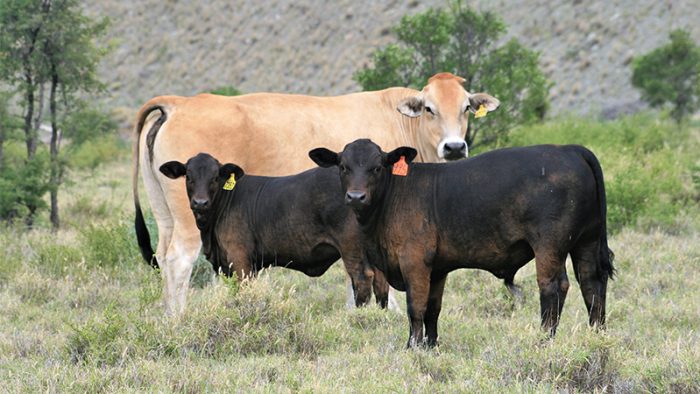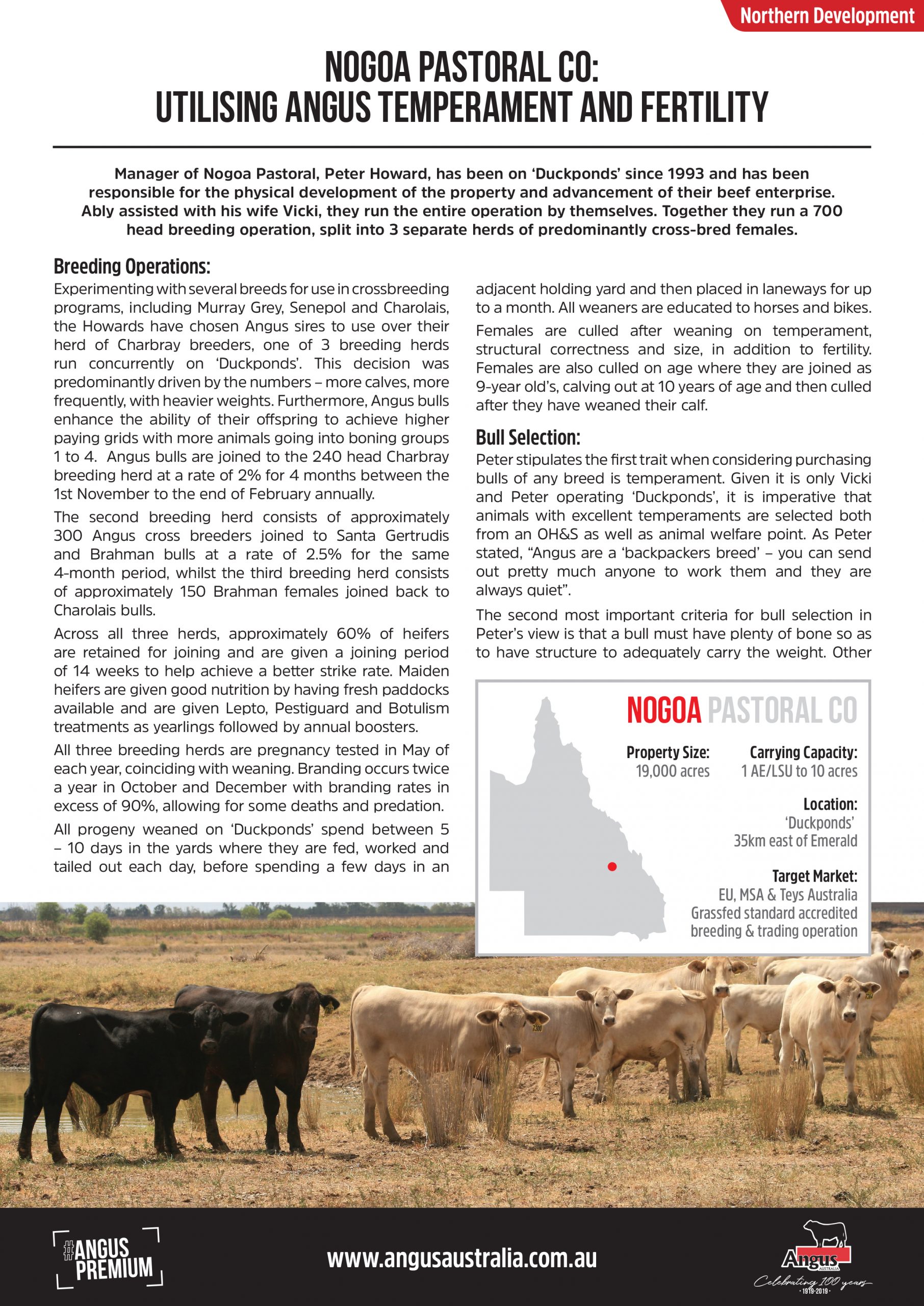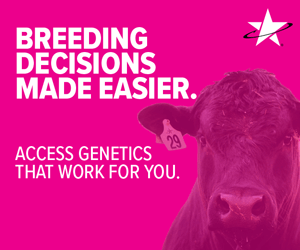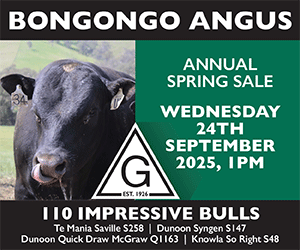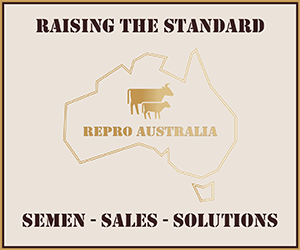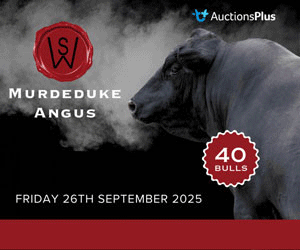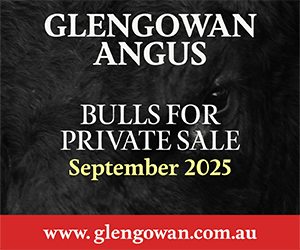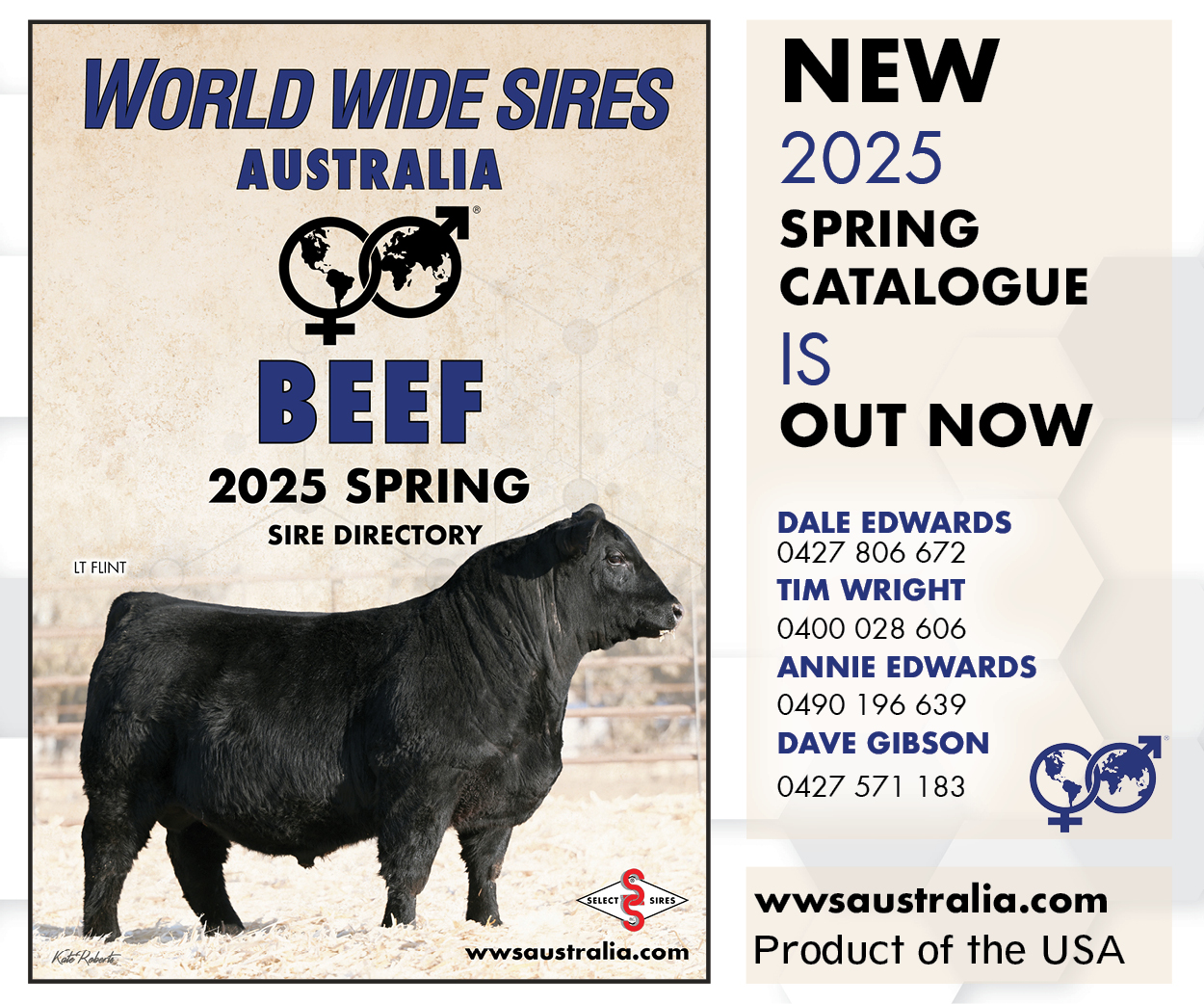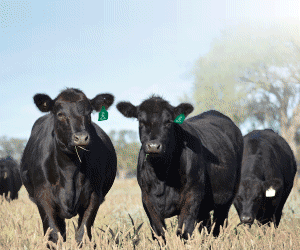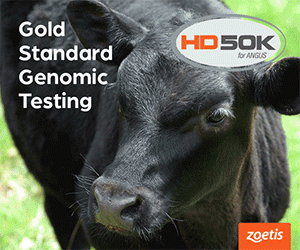Nogoa Pastoal Co – Utilising Angus temperament & fertility
Manager of Nogoa Pastoral, Peter Howard, has been on ‘Duckponds’ since 1993 and has been responsible for the physical development of the property and advancement of their beef enterprise. Ably assisted with his wife Vicki, they run the entire operation by themselves. Together they run a 700 head breeding operation, split into 3 separate herds of predominantly cross-bred females.
Breeding Operations:
Experimenting with several breeds for use in crossbreeding programs, including Murray Grey, Senepol and Charolais, the Howards have chosen Angus sires to use over their herd of Charbray breeders, one of 3 breeding herds run concurrently on ‘Duckponds’. This decision was predominantly driven by the numbers – more calves, more frequently, with heavier weights. Furthermore, Angus bulls enhance the ability of their offspring to achieve higher paying grids with more animals going into boning groups 1 to 4. Angus bulls are joined to the 240 head Charbray breeding herd at a rate of 2% for 4 months between the 1st November to the end of February annually.
The second breeding herd consists of approximately 300 Angus cross breeders joined to Santa Gertrudis and Brahman bulls at a rate of 2.5% for the same 4-month period, whilst the third breeding herd consists of approximately 150 Brahman females joined back to Charolais bulls.
Across all three herds, approximately 60% of heifers are retained for joining and are given a joining period of 14 weeks to help achieve a better strike rate. Maiden heifers are given good nutrition by having fresh paddocks available and are given Lepto, Pestiguard and Botulism treatments as yearlings followed by annual boosters.
All three breeding herds are pregnancy tested in May of each year, coinciding with weaning. Branding occurs twice a year in October and December with branding rates in excess of 90%, allowing for some deaths and predation.
All progeny weaned on ‘Duckponds’ spend between 5 – 10 days in the yards where they are fed, worked and tailed out each day, before spending a few days in an adjacent holding yard and then placed in laneways for up to a month. All weaners are educated to horses and bikes.
Females are culled after weaning on temperament, structural correctness and size, in addition to fertility. Females are also culled on age where they are joined as 9-year old’s, calving out at 10 years of age and then culled after they have weaned their calf.
Bull Selection:
Peter stipulates the first trait when considering purchasing bulls of any breed is temperament. Given it is only Vicki and Peter operating ‘Duckponds’, it is imperative that animals with excellent temperaments are selected both from an OH&S as well as animal welfare point. As Peter stated, “Angus are a ‘backpackers breed’ – you can send out pretty much anyone to work them and they are always quiet”.
The second most important criteria for bull selection in Peter’s view is that a bull must have plenty of bone so as to have structure to adequately carry the weight. Other selection criteria of Peters which Angus can readily fulfil include a good ‘sirey’ head, good feet structure, good muscle pattern, even fat cover, raw weights and scan data at sale time and a straight-haired coat.
After newly purchased bulls arrive on ‘Duckponds”, they usually only spend one night in the yards before being placed in a nearby holding paddock to help adjust to their new environment. After this, they are given no special treatment and placed with other bulls, with the exception that if they are purchased in September bull sales, they are kept separate from established bulls until the start of the joining period (1st November annually) irrespective of breed.
Challenges:
Located near the tropic of Capricorn, being within the tick zone and having to deal with buffalo fly are all challenges that the Angus bulls meet head on.
Peter advises that although the Angus bulls attract more buffalo fly than their other breed counterparts, the Angus bulls actually deal better with the fly as they don’t get the sores and lesions that the other breeds do, even pure bos indicus animals.
Ticks are also present, however again they appear not to have any significant impact on the wellbeing or breeding ability of the Angus bulls. Indeed, they are treated for ticks at the same time as all the other breeds of bulls and are not afforded any further special treatment.
The Results – Fertility:
Using Angus genetics has seen extremely positive impacts on the overall herd fertility. Average pregnancy testing rates is at 92%, however an Angus bull joined last season to 98 breeders got 95 in calf – achieving a preg test rate of 97%.
Especially important to the Howards is that the re-breed rate achieved on 1st calf Angus cross heifers is 90%. This has seen a massive uplift in overall productivity and profitability, given re-breed rates prior to using Angus genetics were approximately 70%.
The Results – Meeting Market Specs:
Angus have also made an impact in better helping meet market specifications. All of the bullocks irrespective of breed slaughtered and dressed out at 340kg with 12mm of fat with 0 – 2 teeth.
However, Angus cross bullocks have the ability to finish earlier and lay fat more consistently compared to some of the other crossbred animals. To help get all steers on an even keel, they are introduced into the 728ha established stand of Leucaena between 12 – 14 months of age where the high protein feed assists in steers averaging 1kg/day weight gain across the year.
Currently, a composite herd of Angus X Charbray X Brahman steers are consistently 40kg heavier across their lives than their straight Bos Indicus steers. As Peter states “using Angus in a crossbreeding program is a natural HGP”, indicating their ability to put on extra weight quickly.
Angus Australia acknowledges the funds provided by the Australian Government through the Meat & Livestock Australia Donor Company (MDC).
This resource was created as a result of a collaboration between Angus Australia and Meat & Livestock Australia Donor Company (MDC) (Project P.PSH.1063).

